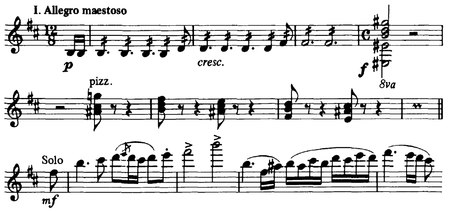| This article needs additional citations for verification. Please help improve this article by adding citations to reliable sources. Unsourced material may be challenged and removed. Find sources: "Violin Concerto No. 2" Paganini – news · newspapers · books · scholar · JSTOR (February 2024) (Learn how and when to remove this message) |
The Violin Concerto No. 2 in B minor, Op. 7, was composed by Niccolò Paganini in Italy in 1826. The third movement owes its nickname "La Campanella" or "La Clochette" to the little bell which Paganini uses to presage each recurrence of the rondo theme. The bell motif is also imitated in the orchestra and in some of the soloist's passages featuring string harmonics. The outcome is a very transparent texture, with the rondo theme having hints of musical qualities associated with Romani music. This movement has served as the basis of compositions by other composers, such as the Étude S. 140 No. 3 "La campanella" by Liszt, and Strauss I's Walzer à la Paganini Op. 11.
Structure
The concerto is in three movements:
- Allegro maestoso (in B minor, ending in B major)
- Adagio (in D major)

- Rondo à la clochette (in B minor)

In addition to the solo violin, the work is scored for 2 flutes, 2 oboes, 2 clarinets in C, 2 bassoons, 2 horns in D, 2 trumpets in E, 3 trombones, serpentone (now usually performed on tuba), timpani, bass drum, bell in F#, and strings.
References
- Keefe, Simon P. (2005-10-27). The Cambridge Companion to the Concerto. Cambridge University Press. pp. xvii. ISBN 978-1-139-82726-3.
External links
| Niccolò Paganini | |
|---|---|
| List of compositions | |
| Concertos | |
| Caprices | |
| Portrayals |
|
| Related | |
This article about a concerto is a stub. You can help Misplaced Pages by expanding it. |
